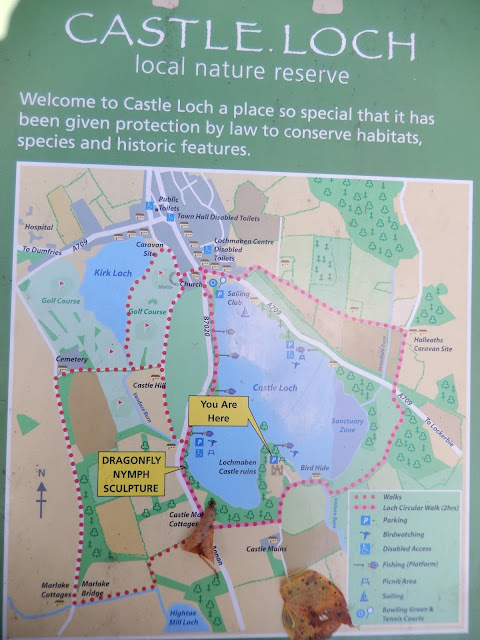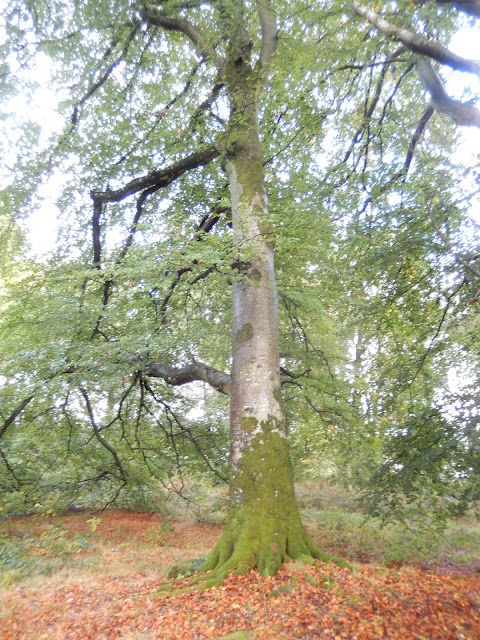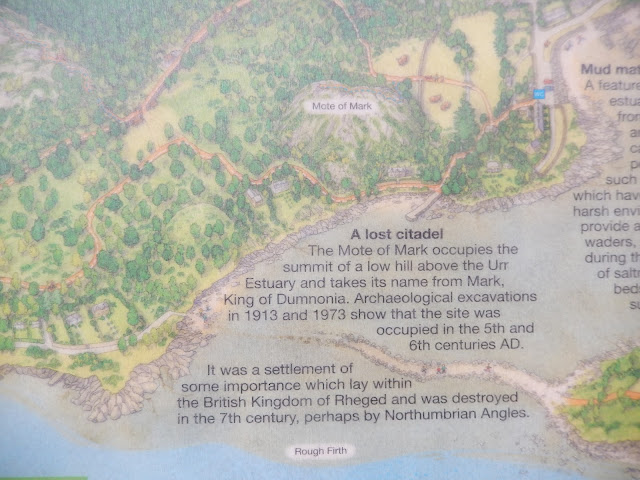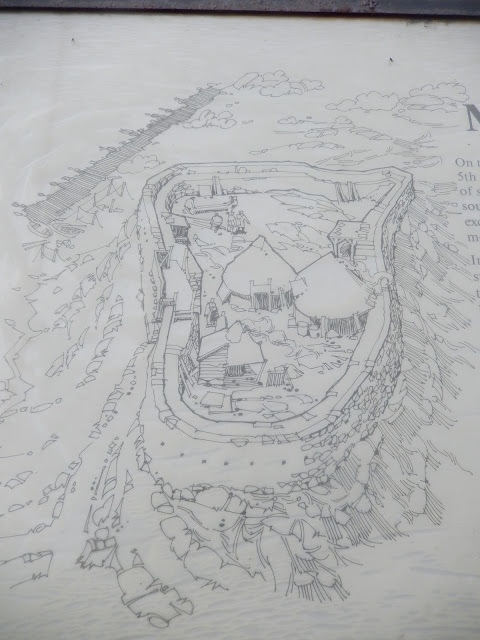Unlike the previous day, the weather was forecasted to be ‘fine and sunny’. Sure enough, when I parked at the large shed near the trail to Hart Fell, I looked over my shoulder and saw a rainbow. A nice, positive omen.
 |
| The start of the climb |
The walk itself started in sunny weather—as they say in Wales, Mae’r haul yn gwenu (‘The sun is smiling’). However, even though the sky was relatively clear of dark clouds, a constant drizzle filmed my glasses. Halfway to Hart Fell spar, the drizzle faded, but the glistening grass made the way a little slippery at times.
On other occasions when I have tried to reach the summit of Hart Fell, I would visit the spar itself, then climb from there. This time I strode past the side trail to the spar and continued along the main path. Unfortunately, this path soon petered out and I had to make my way up and sideways along steep trails, past gorse, bramble, bracken, and heather.
 |
| The river on the way to Hart Fell Spar |
Sheep were annoyed at my disrupting their feeding, with one group making funny huffing noises at me. Crows and ravens circled overhead. The river sparkled and rumbled on my right.
After consulting my map, I continued to follow the fence line and, when it changed direction in the distance, I headed straight up the slope in front of me. I expected the summit to be over the ridge.
It wasn’t.
I heard voices and saw two men descending a track on the other side of the fence. We nodded to each other, then the man in the yellow jacket asked if I was okay. Even though the whole climb had left me huffing and I had to pause numerous times, I said I was fine.
Further up the mountain, I came across a plateau area that I initially thought might be a useful setting for my novel. It led to a saddleback, after which was the final ascent to the trig point at the top of Hart Fell.
The summit there is a broad plateau, much bigger than the previous one, big enough for tents and the rituals and celebrations I’ve written about for a kingship ceremony. The only vegetation is grasses, heather, and clumps of bracken. The views—those I could see—are amazing. One can even see the Solway Firth and beyond.
 |
| Vegetation at the summit of Hart Fell |
I was pleased to have made it to the top after so many failed attempts, but of course the mountain still had a surprise for me. Just as I decided to take photos and videos of the views, for later reference when I re-write the scenes set here, a heavy mist rolled in, accompanied by a bitterly cold north wind.
Huddled in the cairn at the trig point, I ate some lunch and meditated for a few minutes. As the weather wasn’t letting up, I started down again. I angled across the slope I had come up earlier and kept this up as I tried to hook up with paths I had spotted from higher up. Occasionally, I stopped to write notes about the terrain and vegetation, but mainly I stumbled, slid, and sideways stepped my way back. Sometimes on a track. Sometimes from one sheep path to another.
 |
| On the way back, showing the mist |
The trip up took 3¼ hours. The trip back, not counting a stop at the spar, took me around 2¾ hours. At the spa itself, I offered a small gift to Merlin/Myrddin, as I had done earlier at the summit of Hart Fell, and drank three drops of water that dripped from the roof of the cave. With the day wending on and my not wanting to be caught in a late afternoon change of weather for the worse, I didn’t stay long. On the way back I noted the ash, birch, rowan and oak lining alongside the river that leads back to where I parked my car.
I left The Bonnington around 10am and arrived back at 6pm. I was stiff, sore and quite tired, and I immediately jumped into a hot shower. After making notes about the climb—including descriptions such as the swirls of dragonflies and damselflies, the give-way of moss, the knock of water on rock, the expanse of rust-coloured bracken—I had an early night.
I hope you enjoyed this post. As always, I welcome your comments.
Best Wishes
Earl











































